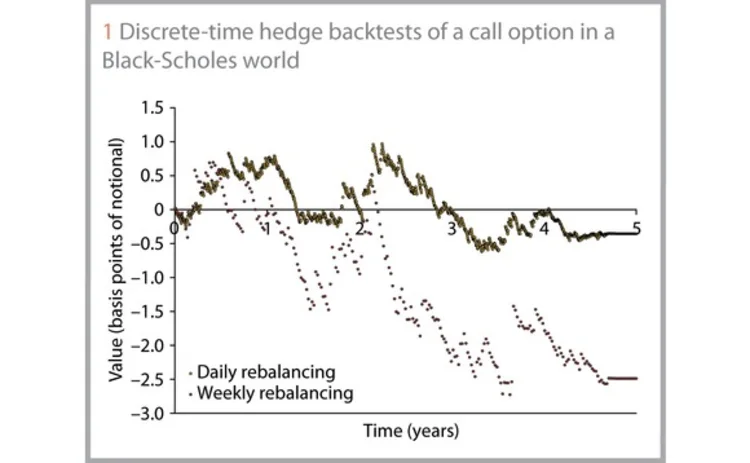
Hedge backtesting for model validation
Derivatives pricing and expected exposure models must be backtested as a basic regulatory requirement. But what does this mean exactly, and how can it be used to reserve against model risk? Lee Jackson introduces a general backtesting framework for market-calibrated models, making the link with financial theory, and shows how it can inform recalibration and help insulate banks from model failure

Pricing and hedging is easy, in theory. The existence of arbitrage-free prices is equivalent to the existence of martingale measures, and there are ways of constructing replication strategies via the martingale representation theorem and the Clark-Ocone formula (see, for example, Harrison & Pliska, 1981, and Musiela & Rutkowski, 2005). Arbitrage-free prices can also be obtained as solutions to
Only users who have a paid subscription or are part of a corporate subscription are able to print or copy content.
To access these options, along with all other subscription benefits, please contact info@risk.net or view our subscription options here: http://subscriptions.risk.net/subscribe
You are currently unable to print this content. Please contact info@risk.net to find out more.
You are currently unable to copy this content. Please contact info@risk.net to find out more.
Copyright Infopro Digital Limited. All rights reserved.
As outlined in our terms and conditions, https://www.infopro-digital.com/terms-and-conditions/subscriptions/ (point 2.4), printing is limited to a single copy.
If you would like to purchase additional rights please email info@risk.net
Copyright Infopro Digital Limited. All rights reserved.
You may share this content using our article tools. As outlined in our terms and conditions, https://www.infopro-digital.com/terms-and-conditions/subscriptions/ (clause 2.4), an Authorised User may only make one copy of the materials for their own personal use. You must also comply with the restrictions in clause 2.5.
If you would like to purchase additional rights please email info@risk.net
More on Risk management
Transforming the trade lifecycle with pricing and reference data in the cloud
LSEG is developing its cloud-based data service to reflect how financial institutions now use information to feed systems and generate insight
Clearing houses warn Esma margin rules will stifle innovation
Changes in model confidence levels could still trip supervisory threshold even after relaxation in final RTS
Institutional priorities in multi-asset investing
Private markets, broader exposures and the race for integration
12 angry members: why dissent is growing on the FOMC
Hardening views on wisdom of further cuts mean committee’s next meeting is unlikely to be harmonious
LSEG streamlines post-trade efficiency across cleared and uncleared markets
LSEG’s Post Trade Solutions extends clearing-style efficiencies to bilateral markets, helping Apac clients navigate rising margin and risk management pressures
Squashing CVA still dominates XVA desks’ priorities
Dealers favour options-based strategies to manage charges; some explore contingent CDSs amid rising exposures
EU single portal faces battle to unify cyber incident reporting
Digital omnibus package accused of lacking ambition to truly streamline notification requirements
XVA desks prioritise core tech upgrades over AI
Vendor upgrades, cloud-native rebuilds and sensitivities tooling dominate 2026 budget road maps








